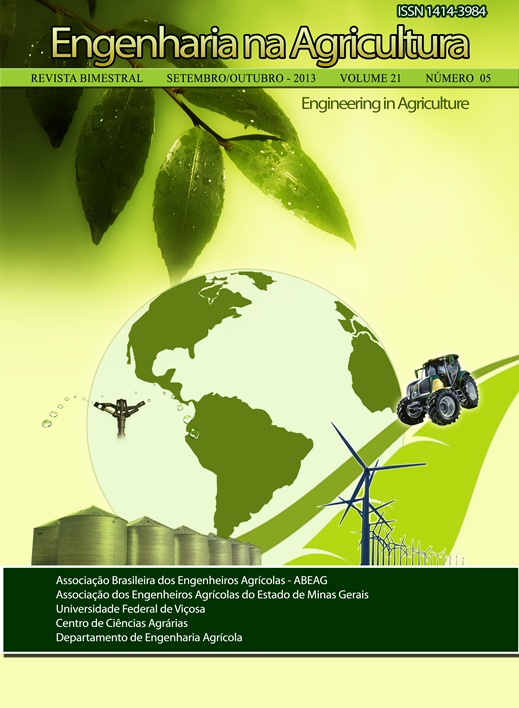BIODIESEL IN AN AGRICULTURAL TRACTOR: OPERATIONAL BEHAVIOR AS A FUNCTION OF THE TYPE AND PROPORTIONS BLENDED IN DIESEL FUEL
DOI:
https://doi.org/10.13083/reveng.v21i5.407Keywords:
biocombustível, consumo específico, opacidade da fumaça.Abstract
Biodiesel can be obtained from reacting vegetable oils, animal fats or waste oil with ethanol or methanol and stands out among renewable energy sources identified as solutions to increase energy supply security and minimize potential environmental problems arising from the use of petroleum-based fuels. The aim of this study was to evaluate the consumption of fuel and opacity of smoke from farm tractors in function of the type and proportions of biodiesel blended with common diesel oil. The experiment was conducted at the Department of Agricultural Engineering, FCAVUNESP, Jaboticabal-SP, using a 4x2 TDA tractor with engine power of 80.9 kW (108 hp). The experimental design was completely randomized in a 6x3 factorial, in which the factors consisted of six proportions of biodiesel/diesel blending (B0, B5, B25, B50, B75 and B100, in which the number indicates the percentage of biodiesel blended in diesel) and two types of biodiesel (palm and castor bean). The following parameters were determined: hourly volumetric consumption (L h-1), hourly weight consumption (kg h-1), specific fuel consumption (g kW-1 h-1) and smoke opacity. The results showed that biodiesel blends at or greater than the 50% resulted in increased specific consumption, however the type of biodiesel did not affect this variable. Smoke opacity was reduced for biodiesel blends of 5% or greater, indicating that the biodiesel type also influenced this measure, where palm oil based biodiesel presented lower opacity.Downloads
Downloads
Published
How to Cite
Issue
Section
License
Authors who publish with this journal agree to the following terms:
The author(s) authorize(s) the publication of the text in the journal;
The author(s) ensure(s) that the contribution is original and unpublished and that it is not in the process of evaluation by another journal;
The journal is not responsible for the views, ideas and concepts presented in articles, and these are the sole responsibility of the author(s);
The publishers reserve the right to make textual adjustments and adapt texts to meet with publication standards.
From submission, the author is fully conceding the paper's patrimonial rights to the publication, but retaining the owner of its moral rights (authorship and paper's identification) according to Creative Commons Attribution-Noncommercial.








 Licensed by
Licensed by 